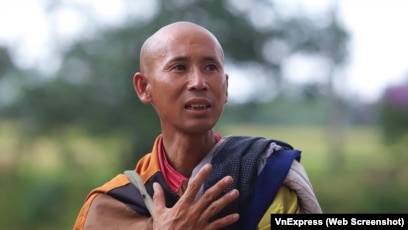13 Early Ascetic Practices
13 Early Ascetic Practices
Dhutaṅga is a tradition of ascetic practice in Buddhism, especially popular in the Theravāda tradition. Momentum starts means giving up comforts and living simply to achieve purity and liberation. There are 13 leading ascetic practices, including:
- Wear chalky robes: Only wear robes discarded by others, do not use new robes.
- Eat only one meal a day: Eat only one meal at noon and do not eat after this session.
- Do not eat more than the prescribed time: Only eat between morning and noon.
- Eat only food in the alms bowl: Do not accept more food outside the alms bowl.
- Do not accept private invitations: Only eat in public places or at temples.
- Eat only in appropriate places: Only eat in permitted places, do not eat in impure places.
- Eat only what you get when you give alms: Don't ask for more food than what you receive.
- Only three robes: Possess only three robes and do not add any other garments.
- Living in the forest: Living away from crowded places, in the forest to practice.
- Living under a tree: Choose a tree stump as a shelter instead of living in a house or temple.
- Living outdoors: Choose to live in the sky to face natural conditions.
- Living in the graveyard: Living in the graveyard to face the impermanence of life.
- Don't lie down: Don't lie down at rest, just sit or walk to avoid laziness.
Those who have practiced asceticism at the beginning
In the history of Buddhism, there are many famous monks who have practiced asceticism at the beginning and achieved great achievements. Some typical examples include:
- Venerable Mahākassapa: One of the Buddha's leading disciples, famous for practicing asceticism and observing strict precepts.
- Venerable Upāli: Known as the foremost keeper of the precepts, he practiced the first Dharma and played an important role in the recording and propagation of the precepts.
- Ajahn Mun Bhuridatta: One of Thailand's most famous Zen masters in the 20th century, he practiced asceticism at the beginning and had a great influence on the meditation movement in Thailand.
- Ajahn Chah: A disciple of Ajahn Mun, he has become one of the most famous Zen masters of Thailand and the world, spreading the Dharma through many international disciples.
The Meaning and Benefits of Early Asceticism
Initiation asceticism aims to help practitioners achieve inner purity, renounce desires, and live simply. These practices help to train patience, acceptance, and renunciation of the self. By living a simple and ascetic life, monks can focus on their practice, alleviating distractions from material life, and moving toward spiritual liberation.
Initiation asceticism is an important part of the Buddhist tradition, not only as a method of practice but also as a way to communicate and preserve the value of renunciation and purity in the monastic life.


Đăng bình luận